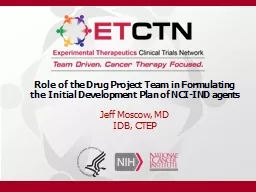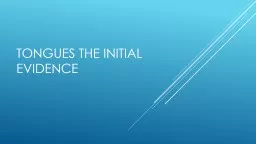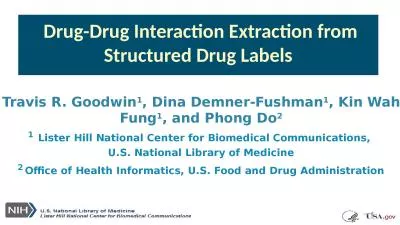PPT-Role of the Drug Project Team in Formulating the Initial De
Author : kittie-lecroy | Published Date : 2016-10-18
Jeff Moscow MD IDB CTEP Overall Process of NCISponsored Drug Development Pharmaceutical Company X applies for CTEP collaboration through the NExT program to help
Presentation Embed Code
Download Presentation
Download Presentation The PPT/PDF document "Role of the Drug Project Team in Formula..." is the property of its rightful owner. Permission is granted to download and print the materials on this website for personal, non-commercial use only, and to display it on your personal computer provided you do not modify the materials and that you retain all copyright notices contained in the materials. By downloading content from our website, you accept the terms of this agreement.
Role of the Drug Project Team in Formulating the Initial De: Transcript
Download Rules Of Document
"Role of the Drug Project Team in Formulating the Initial De"The content belongs to its owner. You may download and print it for personal use, without modification, and keep all copyright notices. By downloading, you agree to these terms.
Related Documents














